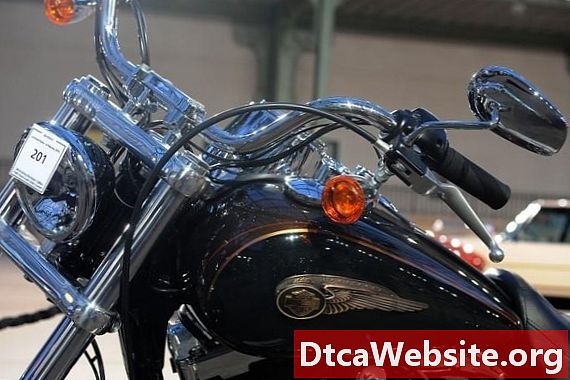
Contenu

A new Harley-Davidson motorcycle begs to be ridden, but simply jumping on a new bike and riding without a plan for properly breaking in the new engine can lead to long-term mechanical problems. An engine that is not correctly broken in can be subject to premature component failure, excessive oil consumption and inadequate power production. Harley-Davidson provides guidance for optimal break-in procedures, and its dealers get the process started, but the bulk of the responsibility for a new engines break-in lies with the bikes owner.
Reasons for Break-In
Breaking in a new engine is a critical process that ensures that the engine will operate efficiently over its entire lifetime and that vital engine components will last as long as they should. Running the engine properly and following the correct break-in procedures during the initial stages of the engines operational life will make sure that valvetrain components and bearings will fit together properly and wear acceptably as the engine ages. The most important function of the break-in process, however, is the proper seating of the piston rings against the cylinder walls. Properly broken in rings will prevent combustion gases from escaping into the cylinder and crankcase, and properly seated rings will ensure that the cylinder walls remain coated with the optimum amount of oil.
Manufacturer Recommendations
Harley-Davidson recommends a conservative break-in process for its engines over the first 500 miles of their operation. The manufacturer suggests that engines not be run faster than 3,000 rpm during the first 50 miles of operation, with no running at extremely high or low rpm for extended periods. Between 50 and 500 miles, Harley-Davidson recommends running the engine at varying speeds and avoiding prolonged operation at any one speed; engine rpm up to 3,500 are acceptable during this period. The manufacturer warns against "lugging" the engine -- operating at very low rpm in high gears -- or subjecting a cold engine to fast starts with a wide open throttle during the break-in period.
Pre-Delivery Inspection
Authorized Harley-Davidson dealers typically will take care of the crucial first steps of a new engines break-in process during a pre-delivery inspection, or "PDI." The PDI is an inspection during which technicians perform final assembly tasks, adjust components such as handlebars and mirrors and check for defects in assembly and finishing. The dealer will also usually prepare the engine for operation by checking fluid levels, inspecting electrical components and ensuring proper oil pressure. Technicians will then start the engine and take the bike on an initial ride, checking for proper engine operation and beginning the break-in process.
Differences of Opinion
Technicians and mechanics dont always agree on the best procedure for breaking in a new engine. Technicians generally agree that properly warming up the engine is vital, no matter how the engine is run after the warmup, and that in the early stages of break-in, cycling the engine temperature several times by allowing the engine to heat up and then cool again before restarting is important. Lugging is also generally considered to be harmful to a new engine. However, some mechanics feel that the manufacturers suggestion that new engines be run conservatively during the first miles of operation does not allow for proper break-in; these mechanics argue that running an engine hard during its initial operation causes the piston rings to wear more effectively than an easy break-in does.


